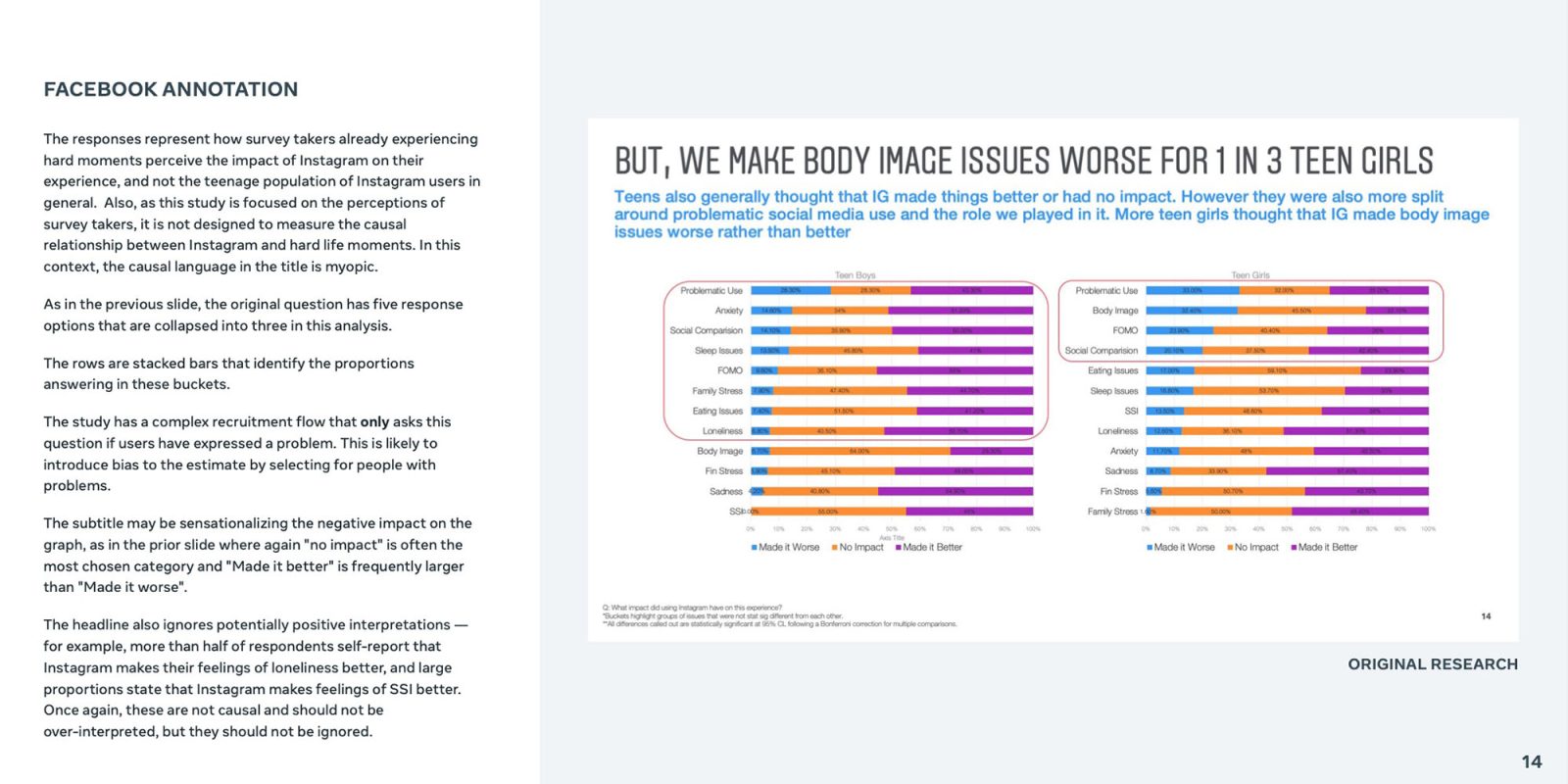
Facebook has attempted to defuse the controversy over its Instagram teen research by releasing two of the reports to the public, annotating them with what it says is important context.
The social network also accuses the WSJ, which obtained copies of the reports, of “mischaracterizing” their conclusions. The paper has not yet directly responded to that accusation, but has instead shared four more reports that Facebook did not make public …
The post Instagram teen research: Facebook releases two reports, the ‘WSJ’ shares four more appeared first on 9to5Mac.
from 9to5Mac https://ift.tt/2WpoVUT https://ift.tt/3zTqIzq
from TechCrunch https://ift.tt/3a6pgPP
via IFTTT
Comments
Post a Comment